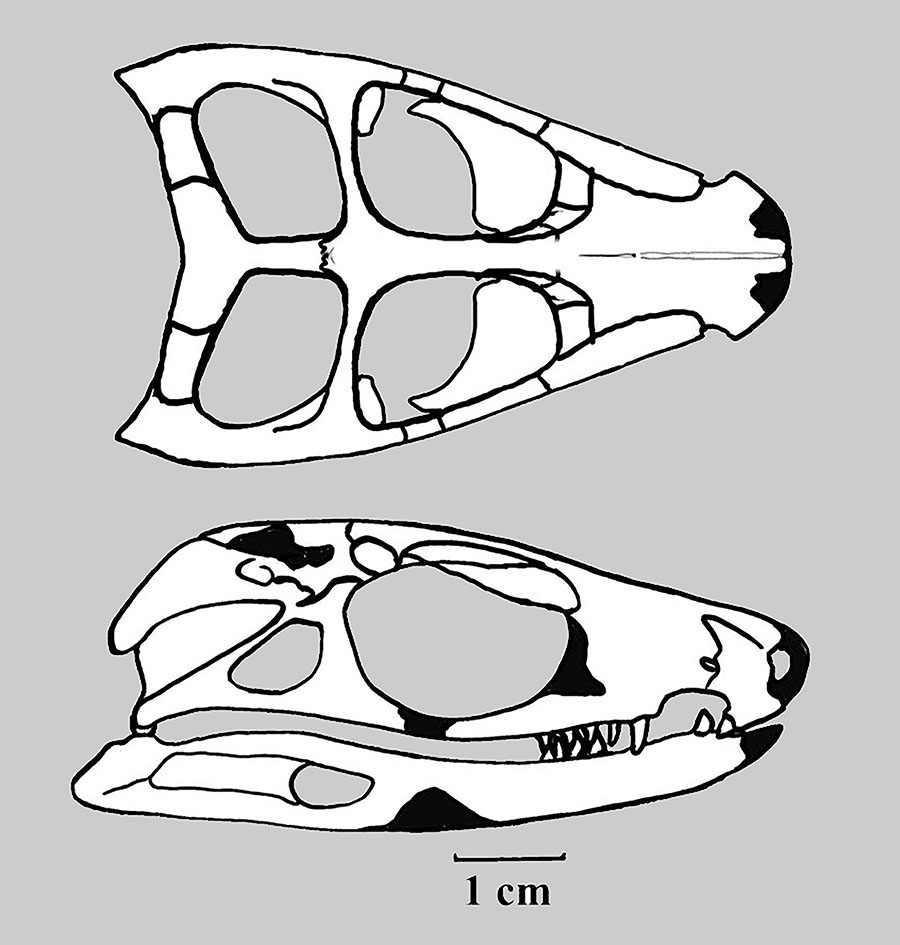
Genus: Fruitachampsa CLARK, 2011
Etymology: From Fruita, Colorado, the town nearest to the type locality, and
Greek, champsi, "crocodile."
= Genus: Nova CLARK, 1985
Species: callisoni CLARK, 2011
Etymology: In honor of George Callison, who led the expedition that discovered
the Fruita microvertebrate locality and directed the recovery of its fossils.
Horizon: LACM 120455a
Locality: Quarry 4, FPA (Fruita Paleontological area), south of Fruita, Mesa County, Colorado.
Horizon: Brushy Basin Member, Morrison Formation.
Biostratigraphy: Zone 4.
Age: Upper Part, Comobluffian age, Tithonian Stage, Uppermost Malm Epoch, Late Jurassic.
Material: A skull lacking the ventral braincase and portions of the occiput and left temporal regions, the anteriormost 4 cervical vertebrae. A postcranial skeleton is associated with the holotype but is intermixed with bones of a smaller individual, numberd LACM 120492. The holotype is restricted to the skull and with the vertebrae in articulation.

Fruitachampsa callisoni (Clark, 2011).
Referred maetrial:
LACM 115726: Associated skull and skeleton fragments.
LACM 115737: Articulated cervical vertebrae, limb material adn posterior part of skull.
LACM 115745: Maxilla, premaxilla, and limb bone fragments.
LACM 120439: 1/2 vertebra.
LACM 120456: Skeletal and skull fragments.
LACM 120480: Osteoderm.
LACM 120481: Metapodials.
LACM 120483: Skull and skeletal fragments.
LACM 120486: Vertebra.
LACM 120487: Maxilla.
LACM 120491: Premaxilla and dentary fragments.
LACM 12049: Associated skeleton and skull fragments on the same blocks with LACM 120455.
LACM 120494: A partial skull.
LACM 128218: Dentaries and limb fragments.
LACM 128284: Posterior part of a palate.
LACM 128306: Nearly complete dorsoventrally crushed skull wiht mandible, associated with postcranial fragments.